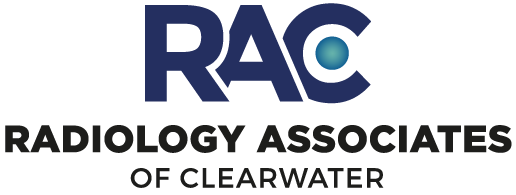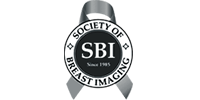Breast Imaging and Interventions
Radiology Associates of Clearwater has a decades-long history of providing excellence in breast health care to the women of our local community. Annually, over 75,000 mammograms are interpreted, over 1000 biopsies are performed, and approximately 200-300 cancers are found. Working closely with the Morton Plant Mease health care system, women may access our services at multiple locations.
Diagnostic Breast Imaging
Physician-supervised breast imaging is needed in the following situations:
- Abnormal screening mammogram
- New signs or symptoms related to the breast
- Complex imaging
- Some patients with high risk conditions or personal history of breast cancer
We currently offer diagnostic breast imaging at the Susan Cheek Needler Breast Center, Mease Outpatient Imaging, and Trinity Imaging. Diagnostic evaluations are performed using mammography, ultrasound, and, when necessary, physical examination. If breast MRI is needed for clarification, this is scheduled within a few days. If a biopsy is needed to exclude cancer, we immediately notify the woman’s physician and schedule the procedure. Fortunately, many problems can be resolved with careful attention to detail in the diagnostic workup, thus avoiding unnecessary biopsies.
Image-guided biopsies
An accurate diagnosis can readily be established with a simple needle biopsy, thus avoiding surgery for most cases. The key to accuracy is confirming that needle placement is exact. The physician has three methods to guide placing the needle, and will chose the one that best depicts the lesion, using either mammography, ultrasound, or MRI.
Needle biopsies do not have to be painful, and our physicians are expert at administering effective local anesthetic. You will be a bit sore for a day or two, but should be able to return to normal activities the day after the procedure.
Procedures offered at the Susan Cheek Needler Breast Center are ultrasound-guided small gauge core biopsies and the larger gauge vacuum-assisted (Mammotome) biopsies, as well as stereotactic biopsies that use mammography as a guide. The breast imagers at the Center also perform MRI-guided biopsies at Morton Plant Hospital, across the street from the Center.
At the Mease Outpatient Imaging Center, we also perform stereotactic and smaller gauge ultrasound-guided biopsies.
Breast MRI
Contrast-enhanced breast MRI is now an accepted tool for pre-operative planning for the treatment of recently diagnosed breast cancer, for evaluation of patients with a variety of signs or symptoms suggestive of underlying breast cancer, and for screening of women proven to be at clearly increased risk of developing breast cancer.
It is crucial that a breast MRI be interpreted by the same physician group that can also perform an MRI-guided biopsy if needed. There are significant differences both in the way breast MRIs are performed, as well as interpreted. In addition, breast MRI requires computer analysis of the “raw data” from the scan. These computers are specific for the MRI scanner they serve and cannot accept images from another scanner. So before you schedule a breast MRI, be sure that a biopsy can be performed if needed. All of the MRI scanners in the Morton Plant Mease system are the same, and biopsies can be performed by our physicians using any of their images.
Tailored Screening for High Risk Patients
One of the most common concerns raised by patients is whether they are at increased risk for developing breast cancer, and if so, how often and in what manner they should be tested. At the Susan Cheek Needler Breast Center, we specialize in helping patients with these concerns.
Definition of High Risk
A woman is considered to be a high risk patient if her lifetime risk of developing breast cancer (assuming a lifespan of 85 years) is 20-25% or greater. Compare this to the woman with no known high risk indicators whose average lifetime risk is 13%. Determining if you fall in the high risk category has major impact on your future screening.
There are many factors that slightly increase a woman’s risk and three main factors that significantly increase risk. (see list of risk factors below)
A great source of confusion is how family history relates to personal risk. Most cases of breast cancer in family members are incidental cases, unrelated to a genetic defect, and only slightly increase a woman’s chance of developing breast cancer. However, certain trends indicate the possibility that a genetic defect is being passed from one generation to another:
- Multiple first degree relatives (mother, sister, daughter)
- Cases of breast or ovarian cancer over multiple generations (mother or father’s side)
- Cancer developing in family members prior to menopause
- Male relative with breast cancer
In some cases, genetic testing is appropriate. However, not all genetic defects can be detected with a blood test, so it is best if a family member with the disease is tested first to see if testing would be valid for unaffected family members.
An excellent resource for learning more about your risk status is the Susan G. Komen website (www.komen.org). To calculate your personal risk using one of the widely accepted assessment tools, the Gail Model, go to www.cancer.gov/bcrisktool. Please note that this particular tool underestimates risk in the setting of multi-generational breast cancer.
Screening of High Risk Patients
Women who have a substantially increased lifetime risk of breast cancer require special counseling and a personalized surveillance regimen. Screening with mammography remains a critical screening tool, especially for the detection of microcalcifications that can be associated with intraductal (Stage 0) cancer, but this gold standard test clearly falls short in the setting of high risk patients. Many breast cancers, especially those related to a genetic defect, can be difficult to differentiate from normal dense breast tissue on mammography. Aggressive cancers that are more prevalent in genetically-transmitted disease sometimes do not demonstrate the intense fibrous tissue (desmoplastic) reaction that is common in slower growing cancers. It is often this reactive fibrous tissue, not the actual cancer cells, that form the bulk of the masses seen on mammography. Some cancers also grow by tracking along existing tissue planes, rather than pushing the normal tissue away. When viewing a mammogram, the cancer tissue simply cannot be distinguished from normal tissue.
The excellent tissue contrast achieved with magnetic resonance imaging (MRI) however proves to be an excellent means for the early detection of these “occult” masses. Recent clinical research has shown that as many as 49% of breast cancers that develop in high risk women are readily detected on MRI but are not apparent on mammography. So conclusive is this data that the American Cancer Society issued guidelines in 2007 stating that women with a greater than 20-25% lifetime risk of developing breast cancer should be screened with MRI in addition to mammography every year.
A typical surveillance protocol for women in this high risk category consists of annual mammography, MRI, and physical examination. Whole breast ultrasound is also useful in women with small dense breasts, but the accuracy of this modality is limited in larger breasts that simply cannot be penetrated properly with the ultrasound beam. Some patients will also benefit from physical exams at least once between their annual screening.
This intense surveillance is not for the faint-hearted. No imaging modality perfectly sorts benign from cancerous findings, and unfortunately sometimes a distinction can only be made after tissue biopsy. We constantly walk the fine line between over-reacting to minor findings and under-reacting to the subtle findings that can be the first sign of an early cancer. The patient’s temperament also comes into play, as women vary widely in their response to the unknown and unresolved. Some will want immediate action, while others prefer calculated observation. Working as a team, the breast imager and patient should devise management strategies that fit the patient’s temperament, reduce unnecessary biopsies, but optimize the chances of finding cancer at the earliest possible time.
High risk patients should also form a close relationship with a surgeon or oncologist who has a special interest in breast cancer. These physicians are best suited to counsel the patient about genetic testing, and risk-reduction strategies such as chemoprevention and prophylactic surgery. They will also provide excellent physical examinations and stay updated on the patient’s other medical problems and how those might affect management.
Risk Factors for Breast Cancer
Primary Risk Factors
- Prior biopsy showing atypical ductal or lobular hyperplasia, or lobular carcinoma in situ
- Personal history of breast cancer
- Family history indicative of genetic defect
- Positive genetic testing
Secondary Risk Factors
- Increased lifetime exposure to estrogen (early menses, late menopause, no breastfeeding, lack of exercise, high alcohol intake, high body fat, hormone replacement therapy)
- First child born after age 30
- Family history that is not strongly suggestive of genetic defect









